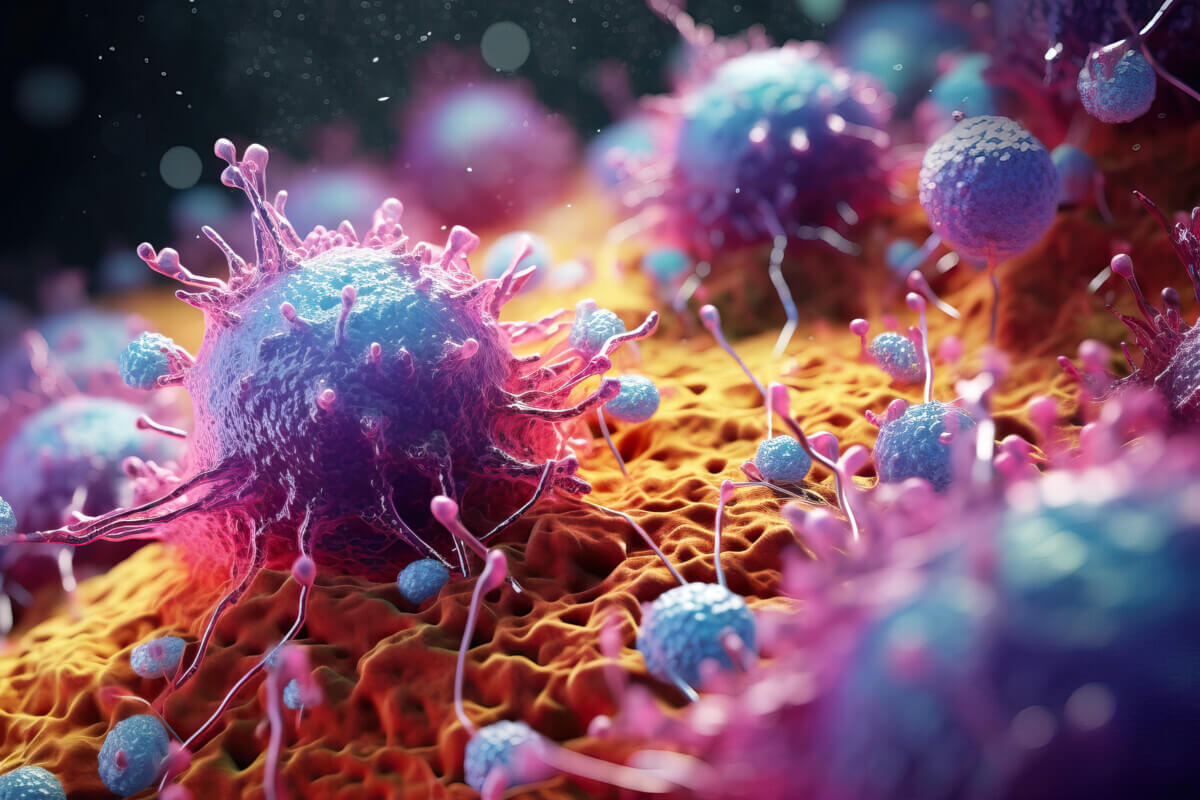
Group of Cancer Cells Illustration (© fotoyou - stock.adobe.com)
SAPPORO, Japan — Cancer cells are notorious for their ability to evade the immune system, which is what makes treating the disease so difficult. However, these cancer cells may have finally met their match thanks to a novel technology designed to make them visible to the body's defenses.
The groundbreaking study by researchers in Japan and the United States focuses on a crucial aspect of our immune system's ability to fight cancer: the detection of cancer cells by immune cells. Cancer cells have a unique way of hiding so the human body can't destroy them.
They reduce the number of certain molecules on their surface, known as Major Histocompatibility Complex (MHC) class I. These molecules are present on the surfaces of all cells and are essential for immune cells to recognize and attack harmful diseases. Simply put, the immune system can't recognize cancer cells as harmful bodies because they remove the markers that label them as cells.
This evasion tactic allows cancer to grow and spread undetected. However, the new technology developed by Professor Koichi Kobayashi and the team, called the TRED-I system, aims to counteract this by increasing the levels of MHC class I molecules on cancer cells, highlighting them for cancer fighters and making them vulnerable to attack.

In experiments with mice, the TRED-I system restored the visibility of cancer cells to the immune system, significantly reduced tumor sizes, and increased the activity of the immune system's cancer-fighting cells. Furthermore, when used alongside existing immunotherapy treatments, the TRED-I system greatly enhanced their effectiveness.
💡What Is Cancer?
- Cells in your body grow and divide abnormally, multiplying out of control without dying off as they should.
- This disrupts the body's natural balance and can form tumors.
- Once thought to be one disease, cancer is actually a collection of over 200 different types.
- Each cancer is named for the body part where it originates.
- While some cancers stay where the tumor is, others can spread to nearby tissues and to the bloodstream.
- This event creates new tumors in distant organs, a process called metastasis.
“Our discovery has the potential to transform the way we approach cancer treatment,” says Kobayashi in a university release.
“This work is the culmination of our team’s research over the past decade,” Prof. Kobayashi concludes. “It’s great to shed light on moving our findings to potential clinical applications. We believe with further refinement, the TRED-I system could contribute significantly to cancer therapy.”
What does a pharmacist think?
The discoveries made in this study may potentially transform how we approach cancer treatment. By making cancer cells visible to the immune system again, this innovative approach could lead to more effective treatments and a brighter future for those battling cancer.
These methods would improve the immune system's efficacy in killing cancer cells and the response to existing cancer treatments. Further research will involve developing methods to deliver the TRED-I system directly to human cancer patients.
The study is published in the journal Proceedings of the National Academy of Sciences of the United States of America (PNAS)











It's kind of true that mice have priority overhuman beings.